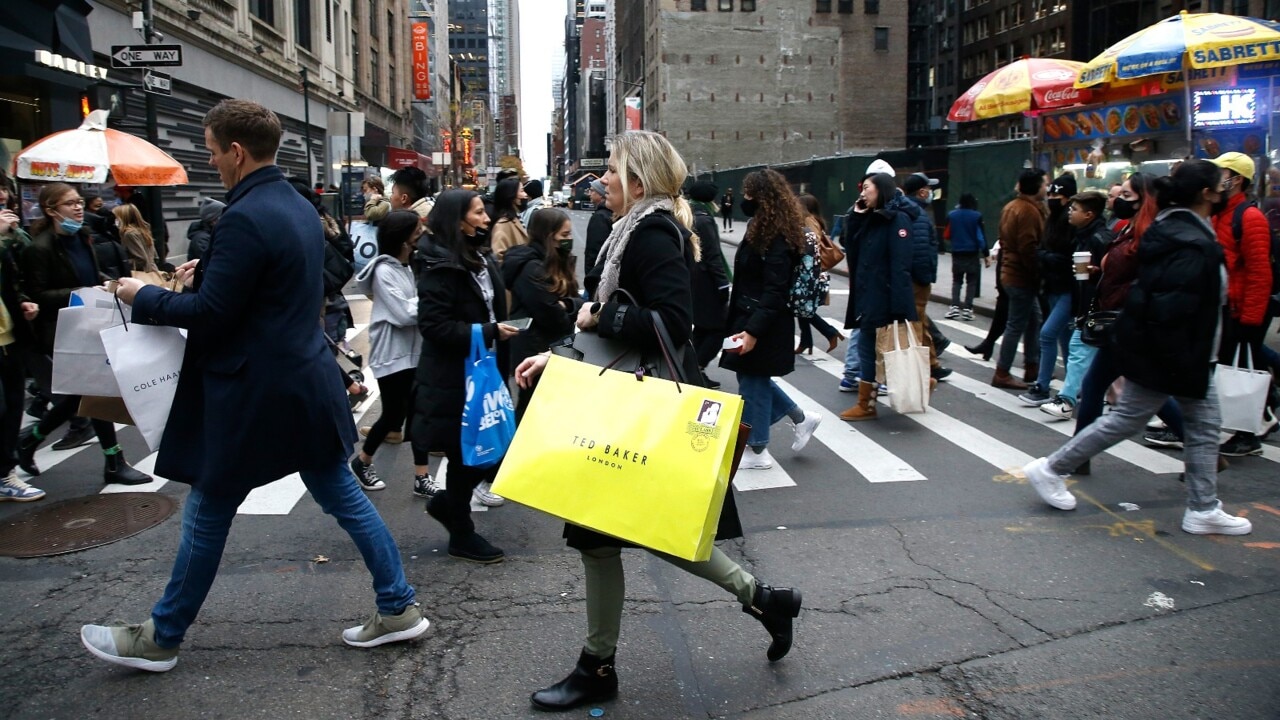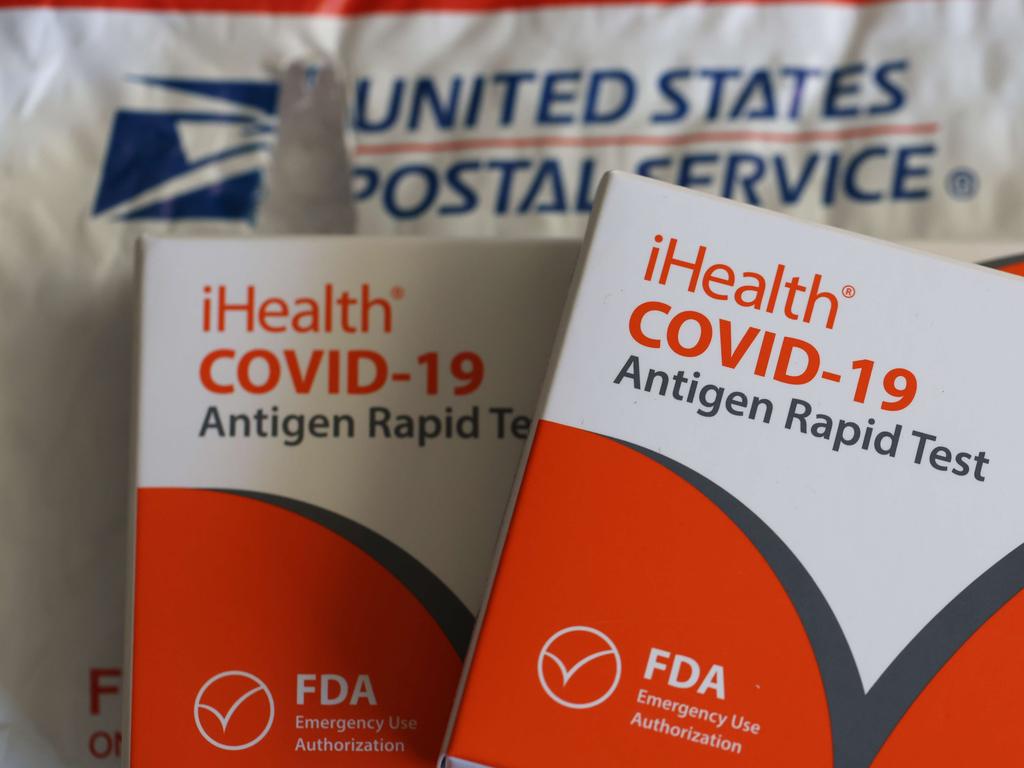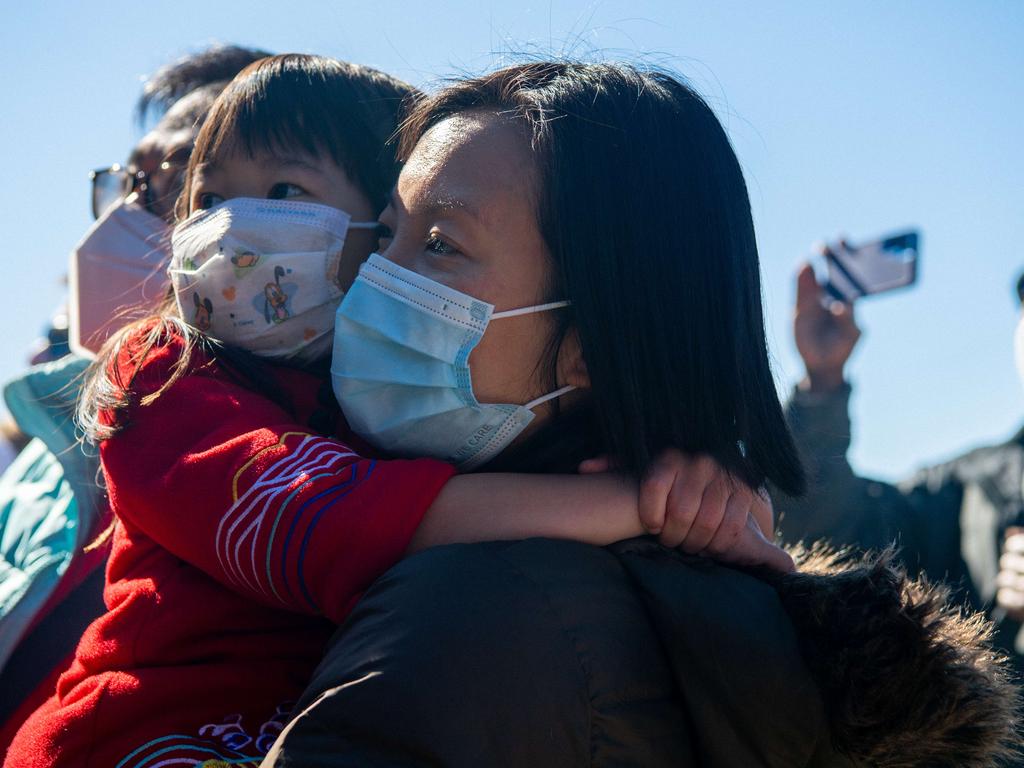Professor’s jaw-dropping comparison between Omicron and Delta
It might be tempting to treat Omicron as the “mild” cousin of its Covid predecessors but a comparison reveals the widespread lie so many are swallowing.

“Omicron is milder.”
It is the catchphrase uttered so regularly since the latest Covid-19 variant emerged that we take it as gospel.
But the truth about the impact of Omicron vs Delta is far less black and white.
Take the latest data out of the US.
Statistics from Johns Hopkins University and the World Health Organisation show there are more daily deaths attributed to Covid-19 in the United States right now than anytime since the pandemic began in late 2019 with the exception of two months last winter.
The only time daily deaths were higher in the US was when they spiked to a record high 4000+ in January last year.
What’s driving that number? Record high cases on the back of Omicron’s transmissability.
Yes, for many, Omicron is milder. But for others, the highly-transmissable variant is harder to avoid and delivers just as much punch.
Oncologist from the Mayo Clinic, Professor Vincent Rajkumar, shared the data on Sunday.
“Reality bites,” he wrote.
“US cases are dropping but it is are still higher than prior waves. Except for 2 months last year, US daily deaths are higher than anytime during the pandemic. Be patient. Stay safe.”
Reality bites.
— Vincent Rajkumar (@VincentRK) February 6, 2022
US cases are dropping but it is are still higher than prior waves.
Except for 2 months last year, US daily deaths are higher than anytime during the pandemic. Be patient. Stay safe. pic.twitter.com/zA83ezge9c
Harvard-trained epidemiologist Eric Feigl-Ding wrote: “It’s not over — COVID deaths with the so-called ‘mild’ Omicron wave has now exceeded both the spring 2020 wave and the 2021 Delta wave, and still hot on the tail chasing last winter’s COVID-19 peak. Are you boosted yet?”
World Health Organisation Director-General Tedros Adhanom Ghebreyesus issued a similar warning late last month about underestimating the danger of Omicron.
“Omicron may be less severe — on average, of course — but the narrative that it is mild disease is misleading, hurts the overall response, and costs more lives,” he told the media from the WHO’s headquarters in Geneva, Switzerland.
“Make no mistake, Omicron is causing hospitalisations and deaths and even the less severe cases are inundating health facilities.
“The virus is circulating far too intensely with many still vulnerable.”

Australia’s own Dr Norman Swan agreed, telling The Project in January that Omicron was not “mild” as many believed.
“There is this myth that this is a mild virus. You hear it all the time from politicians. It is not a mild virus.” he said.
“They compare to Delta. Now, Delta was a virulent virus, yes, it is less virulent than Delta, but if you compare it to the Wuhan virus, it is just as virulent as that. That’s why we’re seeing deaths.
“Two things about Omicron. One is the natural infection with Omicron does not seem to provide anything like the protection that an immunisation gives, unlikely to protect against the next variant and they use this word endemic as if it is happy days when it goes endemic.
“All endemic means is that an infection is somewhere in the world circulating and never disappears. Smallpox was endemic. Nobody says that’s a mild disease. Malaria is endemic in many countries.“Influenza is endemic and it is not a harmless disease. Endemic does not believe it is harmless. This is an epidemic virus. I’m sorry to say, it is not all over Red Rover and we’ve got to learn lessons and letting it rip has caused economic damage and unnecessary deaths.”
While the US this week surpassed 900,000 Covid-19 deaths, a very different story is playing out in Hong Kong.
The city where strict virus control measures have kept Covid-19 at bay has had to push harder than ever to keep its zero-Covid strategy alive. The culprit is the highly-transmissable Omicron variant.
Officials were scrambling this week to ramp up testing capacity and warning that a tightening of restrictions could be needed to keep case numbers down.
Like mainland China and much of East Asia, Hong Kong has long followed a strategy of fighting the virus through contact tracing, targeted lockdowns and lengthy quarantines.
And as much of the world has chosen to open up and live with Covid-19, the city has dug in its heels, with Hong Kong leader Carrie Lam insisting she was still committed to achieving “zero-Covid” even as infections mount.
On Saturday, there were 351 confirmed cases, Hong Kong’s highest daily figure since the pandemic began, with 161 cases being either untraceable or pending investigation.
“Based on the current growth rate of cases, we estimate that (medical isolation) facilities will soon be unable to quarantine all patients,” health chief Sophia Chan told reporters.
Chan urged Hong Kongers to stay at home to slow the spread of the virus, though said that sewage analysis had revealed the virus had already been found in much of the city.
Health officials also said they would loosen rules that have seen thousands of close contacts of infected people detained in a government facility, suggesting they may be able to quarantine at home depending on their risk level.

Last month authorities locked down thousands of residents of a public housing estate after a superspreader event, prompting criticism that the city’s population density made home quarantine unfeasible.
Hong Kong’s spike in cases came on the fifth day of the Lunar New Year holidays, during which the government warned against families gathering for festivities.
City leader Lam earlier said authorities could further tighten virus-control measures next week.
Hong Kong has recorded more than 15,000 confirmed coronavirus cases with 213 deaths.
Since the pandemic began, there have been over 5.7 million deaths.
The US has recorded the most Covid deaths with 902,266, followed by Brazil with 631,802, India 501,979 and Russia 335,414.
Taking into account excess mortality linked to Covid-19, the WHO estimates the overall death toll could be two to three times higher.
— with AFP



